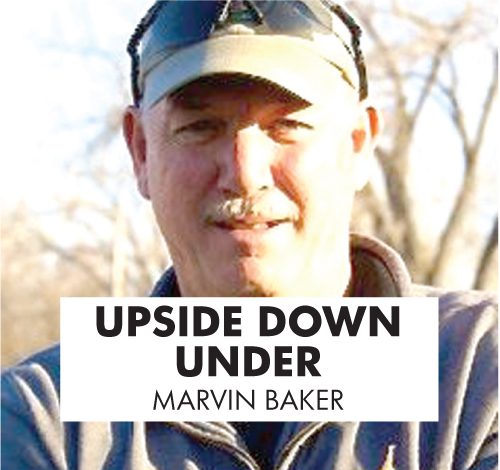When you first look at the 2023 USDA Hardiness Zone map that was recently published, you’ll see subtle changes for those of us who live in North Dakota.
The biggest changes are on the southern tier of the state. Richland, Dickey, LaMoure, with parts of Stutsman, Dickey, LaMoure, Logan, McIntosh, Sioux, Grant, Bowman, Slope, Stark, Billings and Golden Valley counties having changed from Zone 4a to 4B. It also includes parts of Sheridan and McLean counties and a tiny spot around the city of Minot.
What that means is USDA calculates over the long term that the areas named will not drop below 25 below through the winter and in the previous map issued in 2012, rock bottom was 30 below.
That doesn’t mean it’s impossible for these places to not go to 30 below in the depth of winter. It means long-term statistics are averaged out and the coldest winter temperatures in these areas have increased 5 degrees Fahrenheit in the past 11 years.
Likewise with Zone 4a. It has crept closer to the Canadian border with all of Ward and Mountrail counties in Zone 4a, and several other counties including Pembina and Burke, becoming 4a instead of 3b. Again, it represents a 5-degree increase since 2012.
People have long argued with me that I’m in Zone 3 where I live in the gooseneck of Ward County. Since 2012, however, there had been a sliver of the gooseneck, including Carpio that was in Zone 4a. Now it includes all of Ward County including Kenmare, formerly 3b.
Seeing these changes gave me an idea. I pulled up USDA hardiness zone maps going back to 1960 when USDA started to issue them. And here’s a shocker!
In 1960, the entire state of North Dakota was in Zone 3 with the exception of Bowman, and parts of Adams, Stark, Golden Valley and Billings counties. The rest of the state was solid Zone 3 which meant the coldest winter temperature residents could expect was 40 below zero. That means that in some locations, the coldest winter temperatures are 15 degrees warmer than they were 62 years ago.
In 1990 the map changed with most of North Dakota remaining in Zone 3, but the counties bordering the South Dakota state line had become Zone 4, as well as the Red River Valley counties. That seemed to be a drastic long-term change because it represented a 10-degree Fahrenheit increase from minus 40 to minus 30.
Further revisions were made to the 2012 map. Twenty-two years after the 1990 map was issued, almost the entire state of North Dakota had changed to Zone 4a, with the exception of the counties along the Canadian border.
Also in 2012, tiny spots in Dickey and Sioux counties had been upgraded to Zone 4b.
Similar changes are evident in other states as well. Parts of Pennington, Custer and Lawrence counties in South Dakota are now considered Zone 5b, meaning the coldest temperature isn’t expected to drop below 15 below.
There are parts of Alaska, along the Pacific Ocean stretching all the way up to Nome that now have a 4a climate, which is essentially the same as a good portion of North Dakota. There are other parts of Alaska, from Juneau to south of Anchorage that now have a Zone 6b rating, the same as central Kansas and Missouri, as well as southeastern Colorado.
It seems really odd, but there are tiny parts of Alaska, northeast of the Arctic National Wildlife Refuge, that are Zone 4a, the same as most of North Dakota. That’s 68.43 Degrees North Latitude. In other words, it’s roughly 100 miles north of the Arctic Circle.
Nationwide, the new map shows an average of a 2.5-degree Fahrenheit increase since 2012. In addition, the summer of 2023 was the hottest meteorological summer on record in the United States.
Long term, “the times, they are a changin.’” Short term, it means we can grow plants and produce harvests that 60 years ago were impossible.












